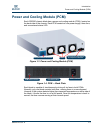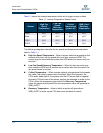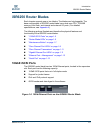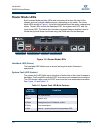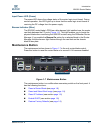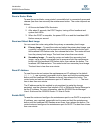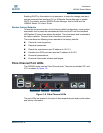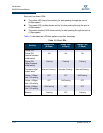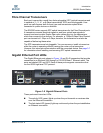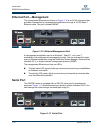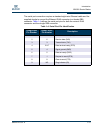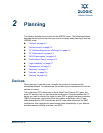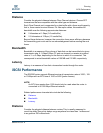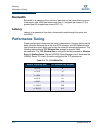
Introduction
iSR6250 Router Blades
SN0051103-00 A 1-11
A
Fibre Channel Transceivers
Each port is served by a small form-factor pluggable (SFP) optical transceiver and
is capable of 1-, 2-, 4-, or 8-Gbps transmission. SFPs are hot-pluggable. User
ports can self-discover both the port type and transmission speed when
connected to public devices or switches.
The iSR6250 router supports SFP optical transceivers for the Fibre Channel ports.
A transceiver converts electrical signals to and from optical laser signals to
transmit and receive data. Duplex fiber optic cables plug into the transceivers,
which then connect to the devices. For example, a 1-Gbps/2-Gbps Fibre Channel
port can transmit at 1-Gbps or 2-Gbps; however, the transceiver must also be
capable of delivering these rates.
The SFP transceivers are hot pluggable. You can remove or install a transceiver
while the router is operating without harming the router or the transceiver.
However, this interrupts communication with the connected device. See page 3-7
for information about installing and removing SFP optical transceivers.
Gigabit Ethernet Port LEDs
The Gigabit Ethernet ports shown in Figure 1-9 are RJ-45 connectors that provide
connection to an Ethernet SAN through a 100/1000 Base-T Ethernet cable. The
ports are labeled GE1 and GE2. Each of these ports supports connections that
run the iSCSI high-level TCP protocol.
Figure 1-9 Gigabit Ethernet Ports
These ports each have two LEDs:
The activity LED (green) lights up when the port transmits or receives data
over the Ethernet connection.
The link status LED (green) lights up continuously when the port establishes
an Ethernet connection.
MGMT IOIOI
FC1 FC2 GE1 GE1
GE4 GE3 iSR6240
Intelligent Storage Router
iSR6200 System
10GbE1 iSR6250
Intelligent Storage Router
10GbE2
Activity Link Status



